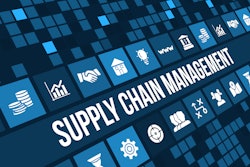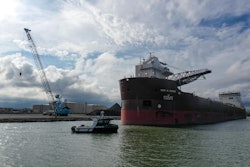
These days, it seems like artificial intelligence (AI) is playing a growing role across pretty much every industry. It is certainly being put to good use in the transportation industry, and there are exciting developments on the horizon.
When it comes to cold chain logistics, being able to turn the vast amount of data already being generated by vehicles and assets into accurate and actionable predictions is a key benefit of AI. It allows motor carriers to be proactive to ensure successful deliveries, customer satisfaction and regulatory compliance.
Improve temperature reporting
Manual temperature checks are inefficient and prone to human error and, unfortunately, intentional falsification. AI technology integrated with specialized sensors and Internet of Things (IoT) devices eliminate those issues by continuously monitoring reefer trailer temperatures – including in separate compartments within a single trailer – providing real-time visibility to carriers and other stakeholders. In addition to delivering better, more consistent temperature data, AI is helping carriers realize significant cost savings by cutting out the need for drivers to stop periodically to probe products.
Moreover, product-specific algorithms can detect temperature anomalies and deviations. By comparing real-time temperature data with predefined thresholds or expected temperature patterns, AI can predict when an issue may occur and, through automated alerts, notify personnel in time to take corrective action.
Extend product life
Real-time temperature monitoring and product-specific algorithms – in combination with predictive alerts – also allow for a high degree of precision in maintaining reefer temperatures. This, in turn, can help extend the life of perishable products, which is a huge benefit to customers. For instance, lettuce kept at 34°F can remain viable for up to twice as long as lettuce kept at 39°F, which is still in spec. Being able to deliver products at optimal temperatures to extend product life provides a significant competitive advantage for carriers that adopt AI-powered solutions.
Manage operational conflicts
AI also helps carriers manage unanticipated conflicts that arise from operational decisions. Improved routing, for instance, results in more efficiency. But for reefer carriers, that efficiency can result in increased thermal abuse as trailer doors are opened more frequently. However, predictive data from AI, along with tools like two-way reefer controls, allows fleet managers to make needed adjustments before there is problem.
In general, harnessing the processing power of artificial intelligence to inform and augment human decision-making will help carriers successfully navigate the ever-changing landscape of increasing complexity, stakeholder demands, evolving regulation and more.
Improve fleet health and maintenance
The predictive analytics supplied by AI extend beyond temperature monitoring and into the realm of maintenance. Advanced AI solutions will be able to analyze vehicle and equipment components and trends and provide predictions for when a part is likely to fail and recommend preemptive repairs, reducing the chances of unexpected breakdowns and extending the lifespan of equipment.
What does the future hold for AI and transportation?
Today, AI is helping carriers make sense of a vast amount of data to empower them to make better operational decisions. In the future, though, AI could take over some of that decision making, automating things like pre-cooling trailers, making temperature adjustments during a journey and scheduling maintenance. And there is the potential for AI to help ease major challenges that the trucking industry faces, such as workforce shortages, rising fuel and equipment costs, supply chain issues and more.

















